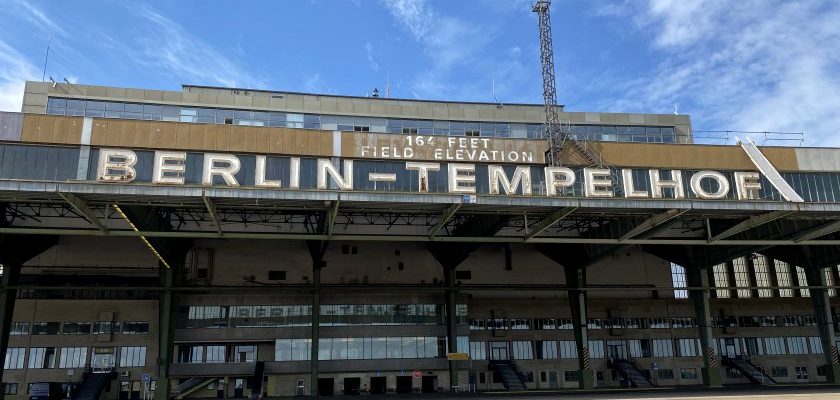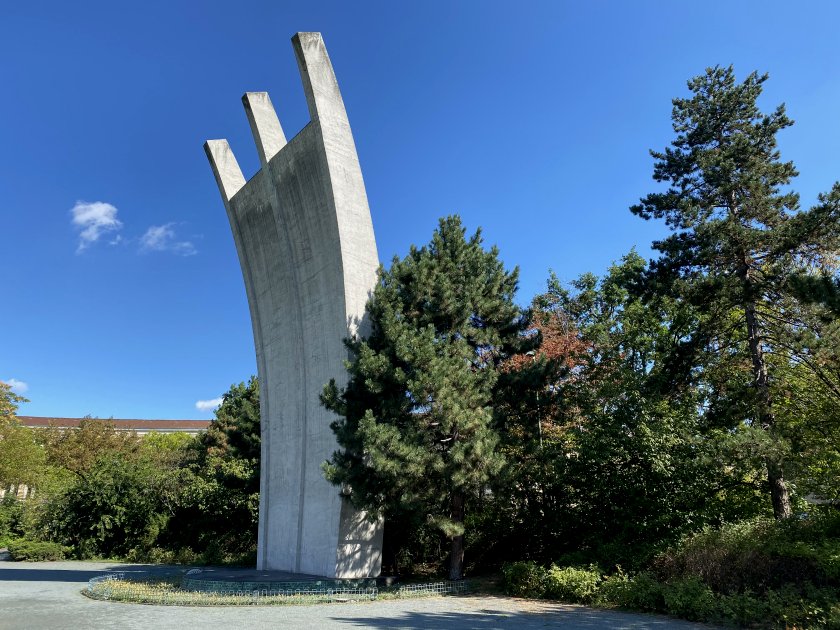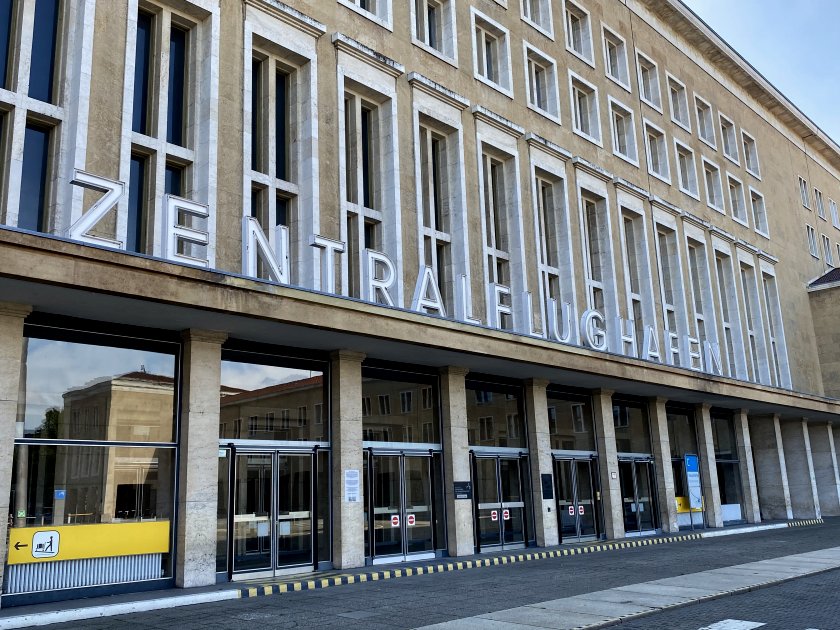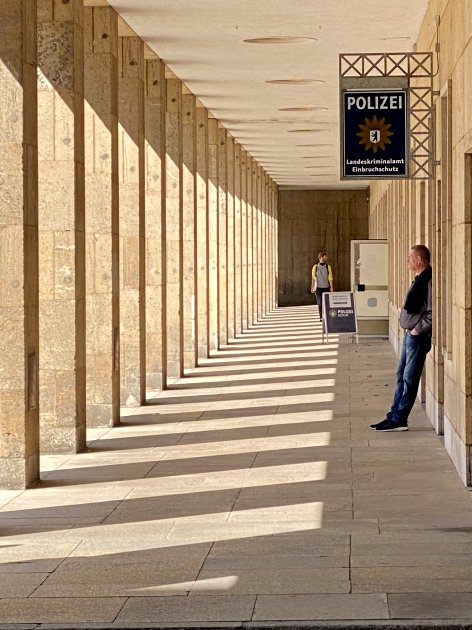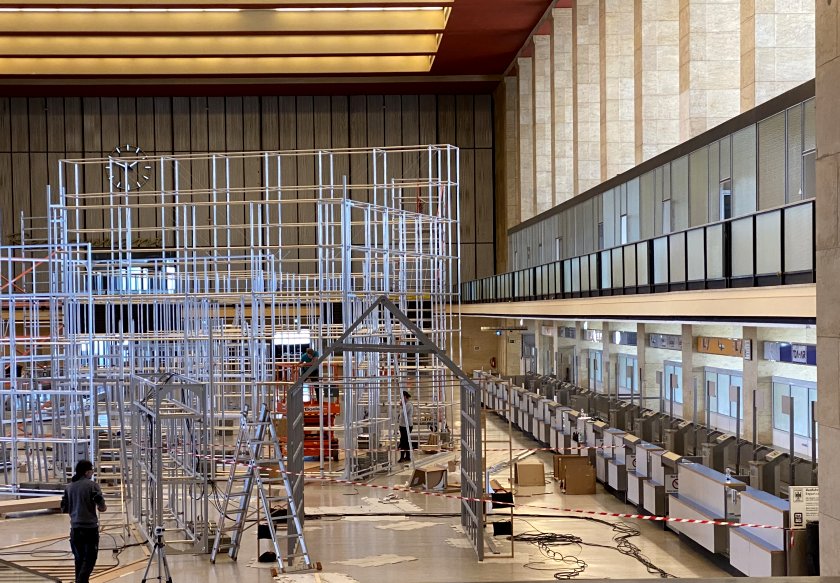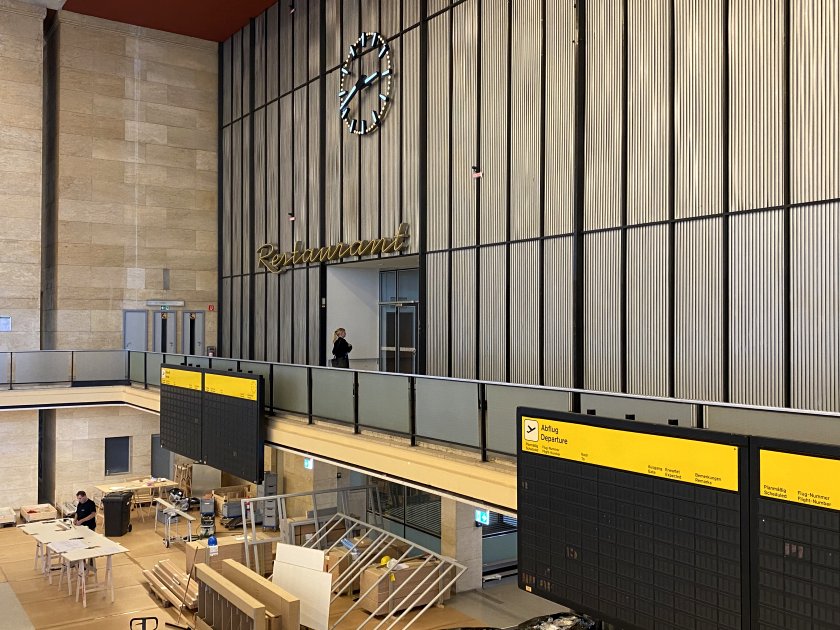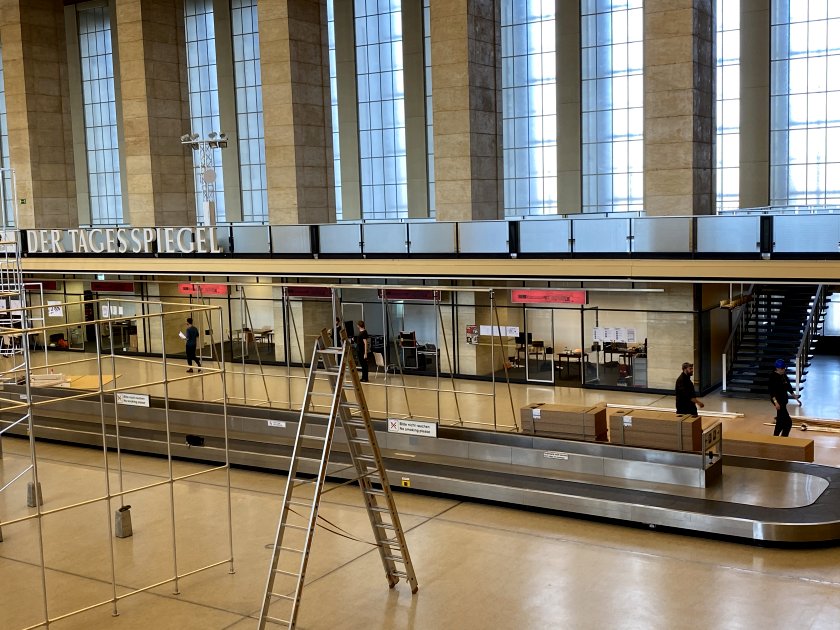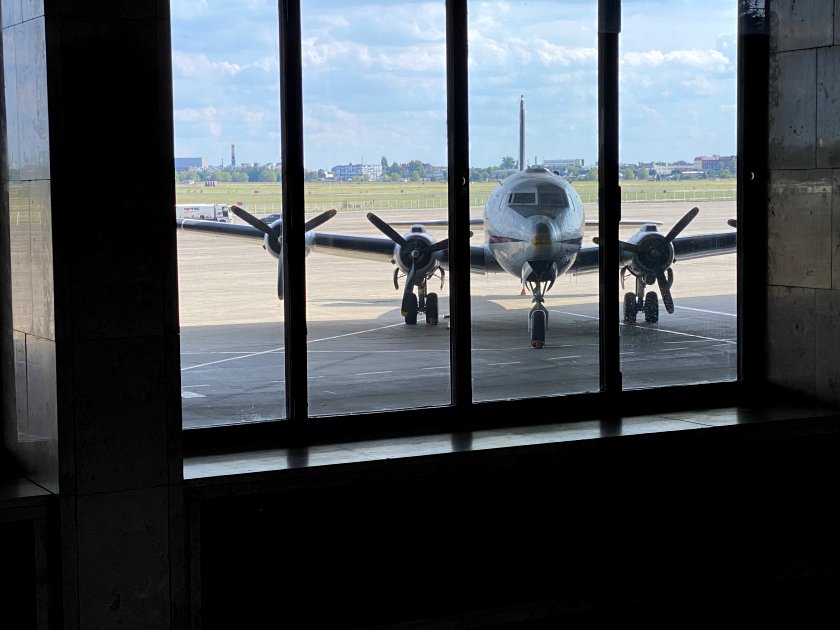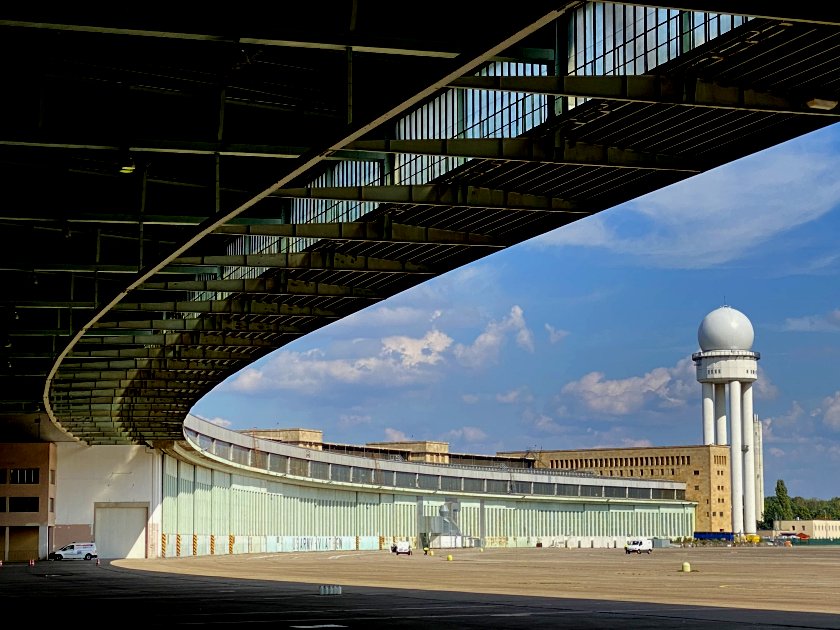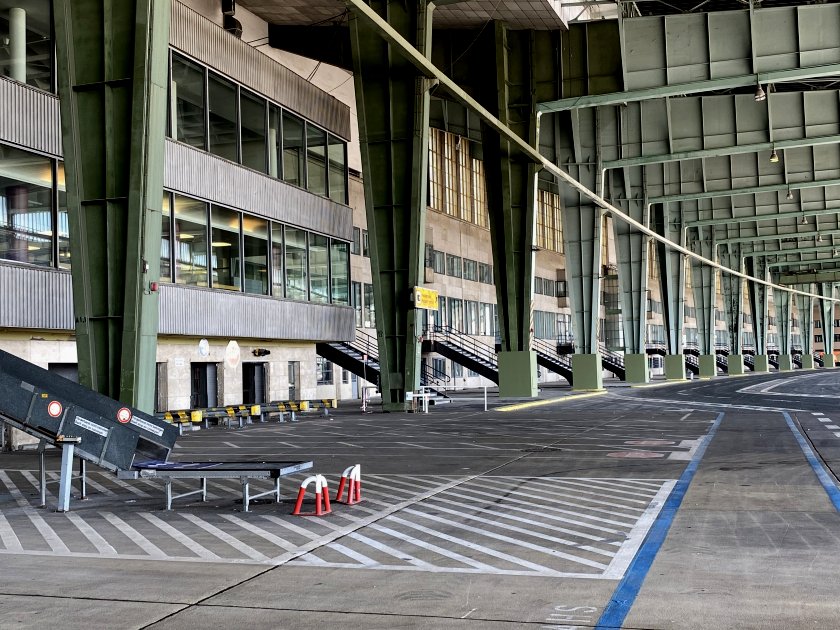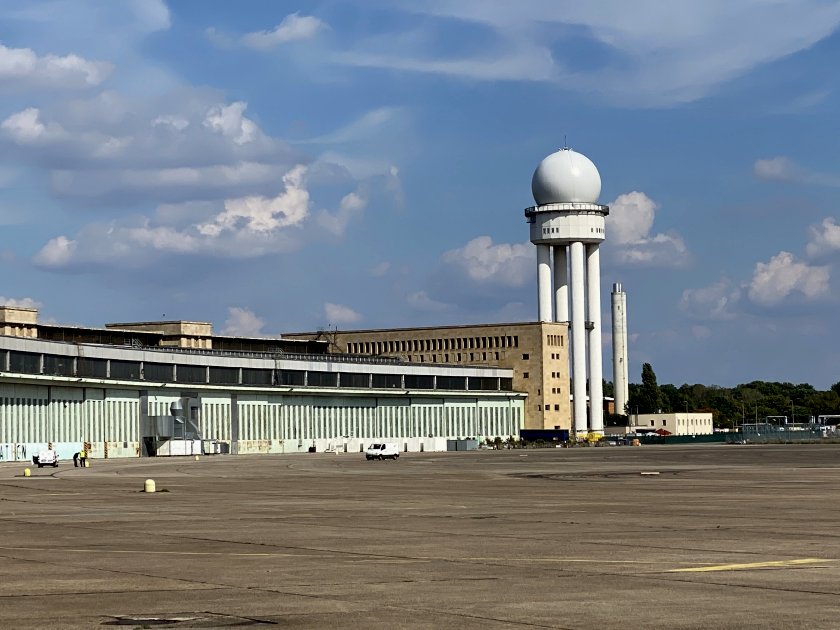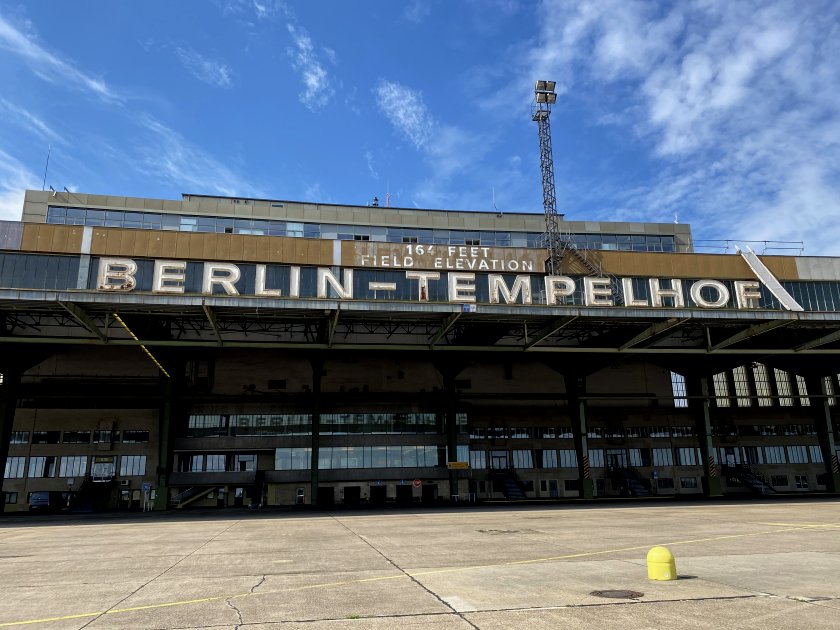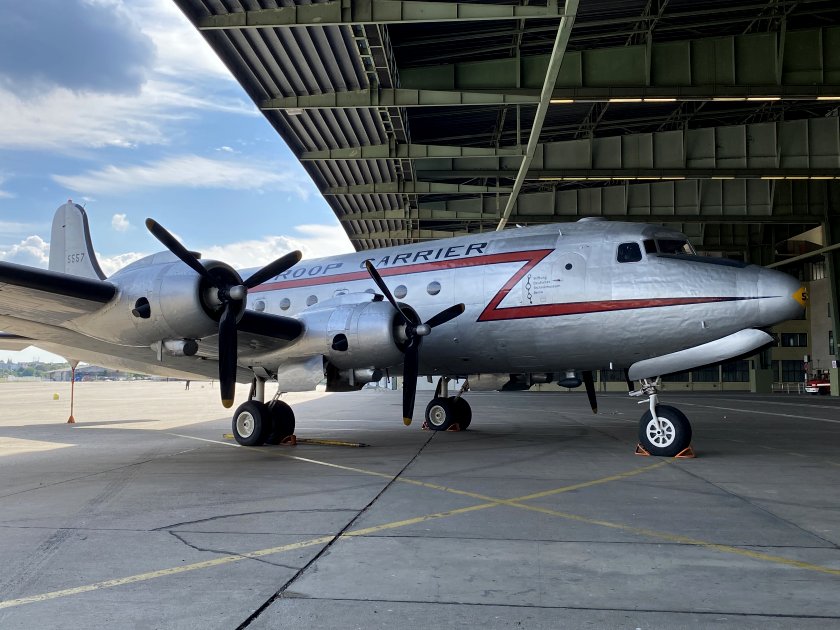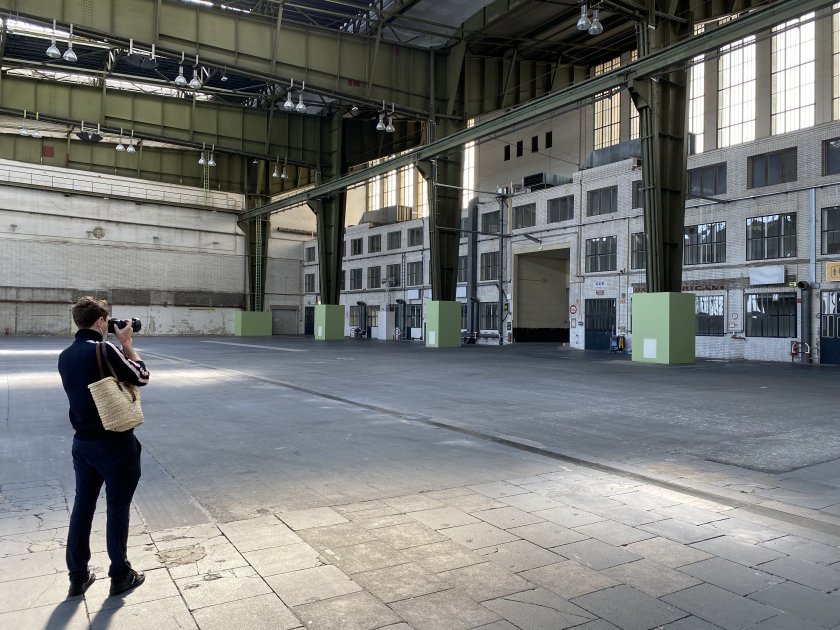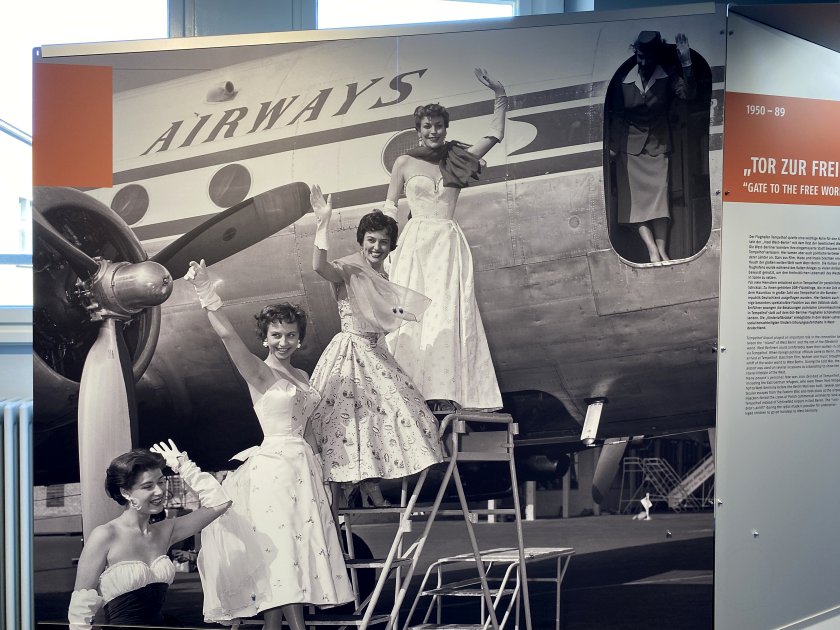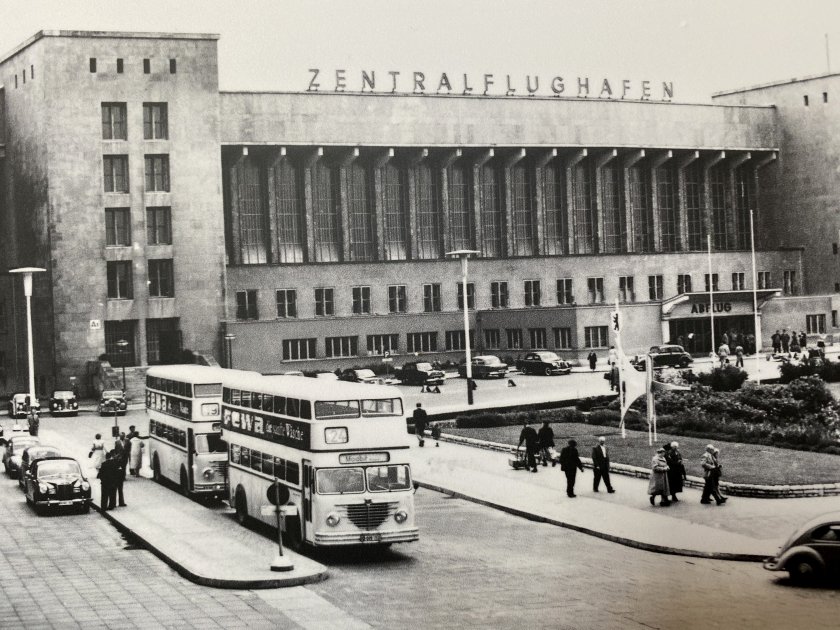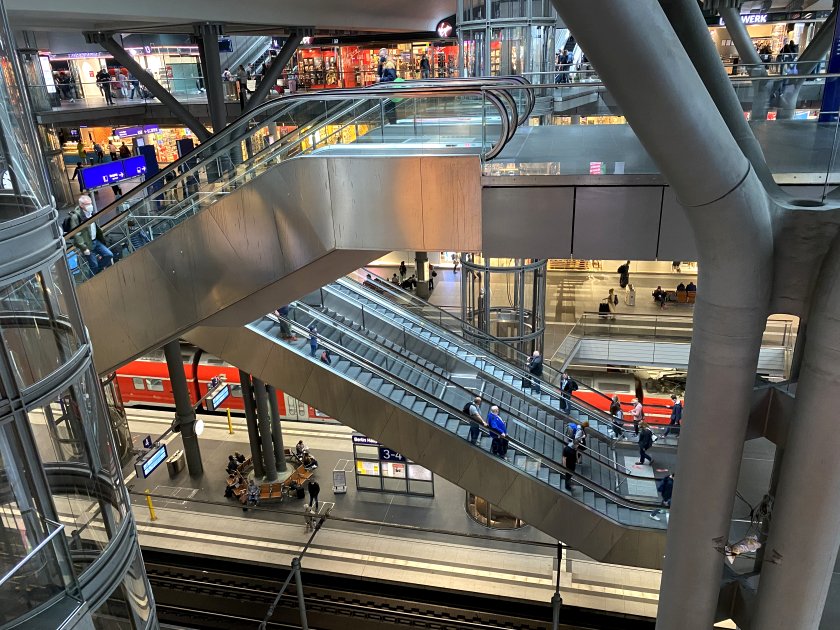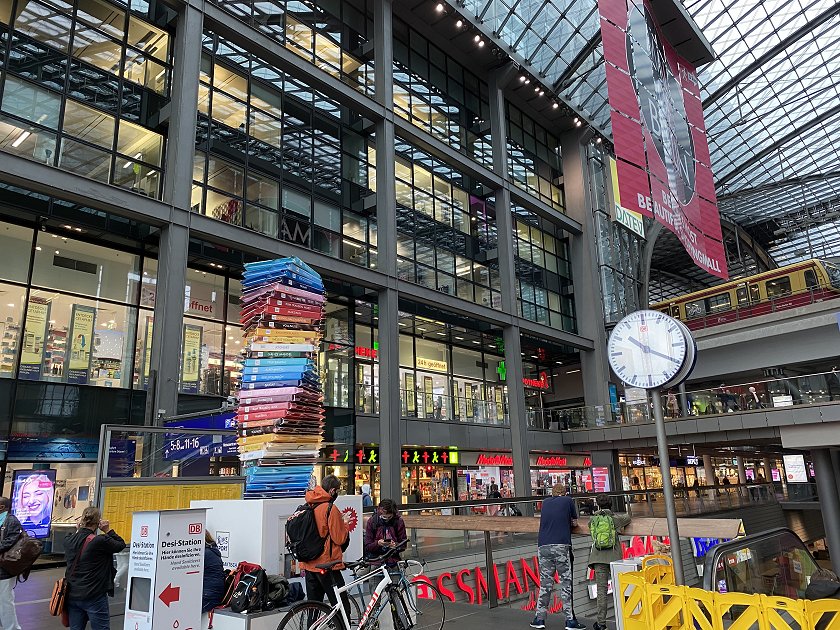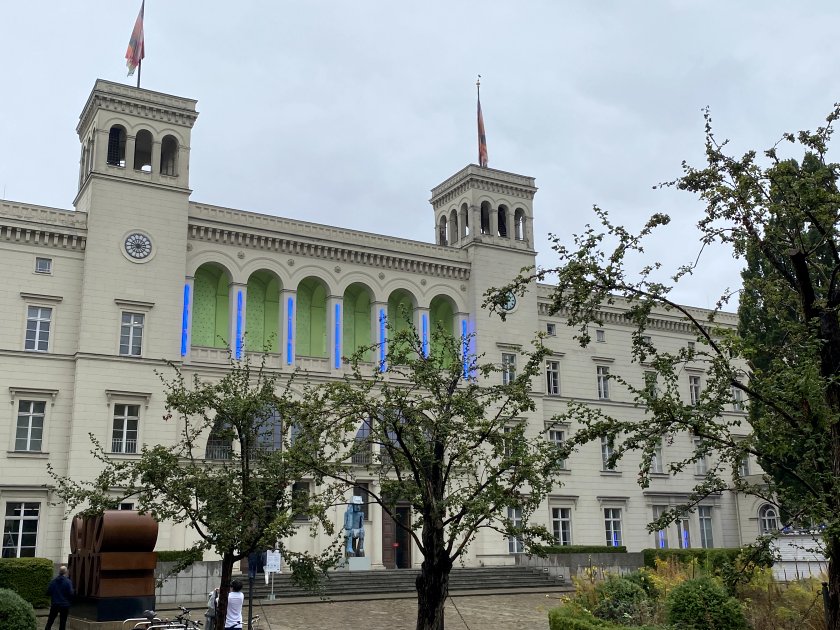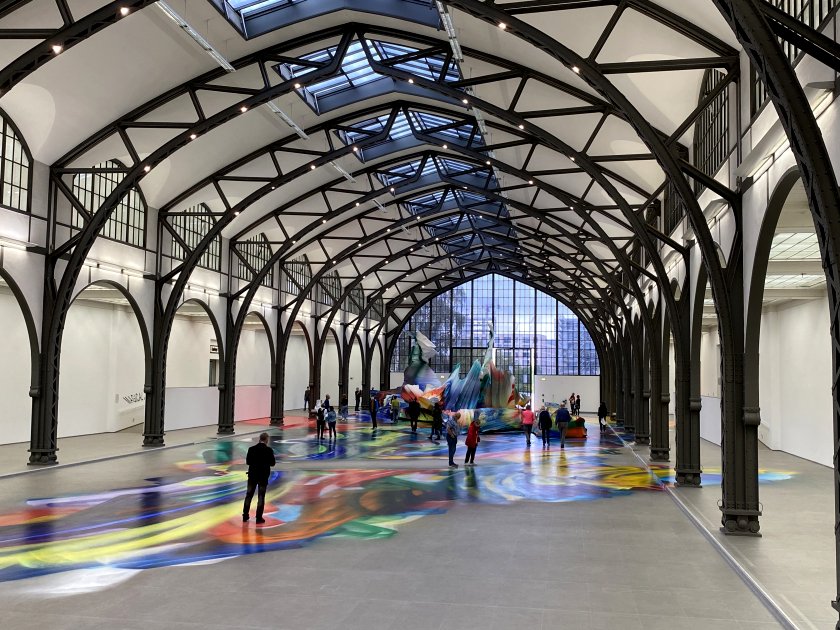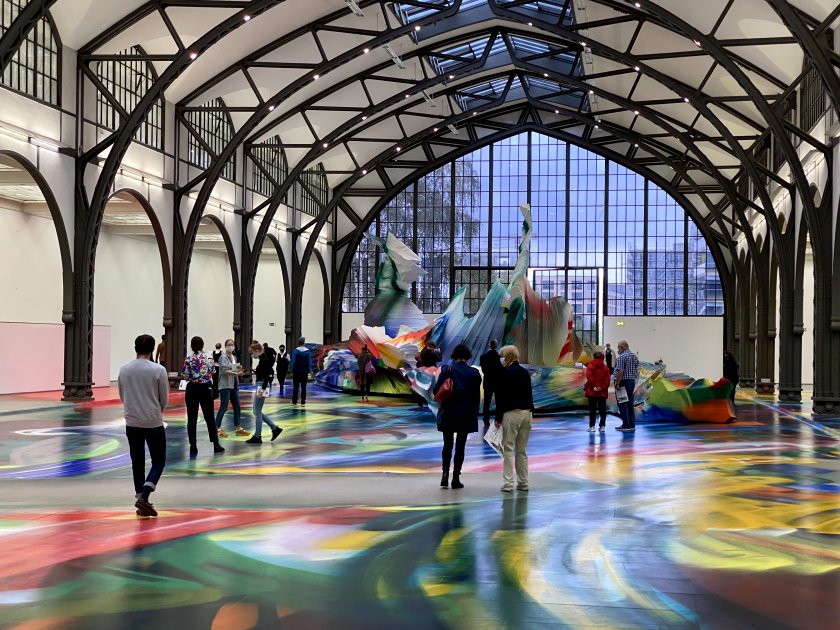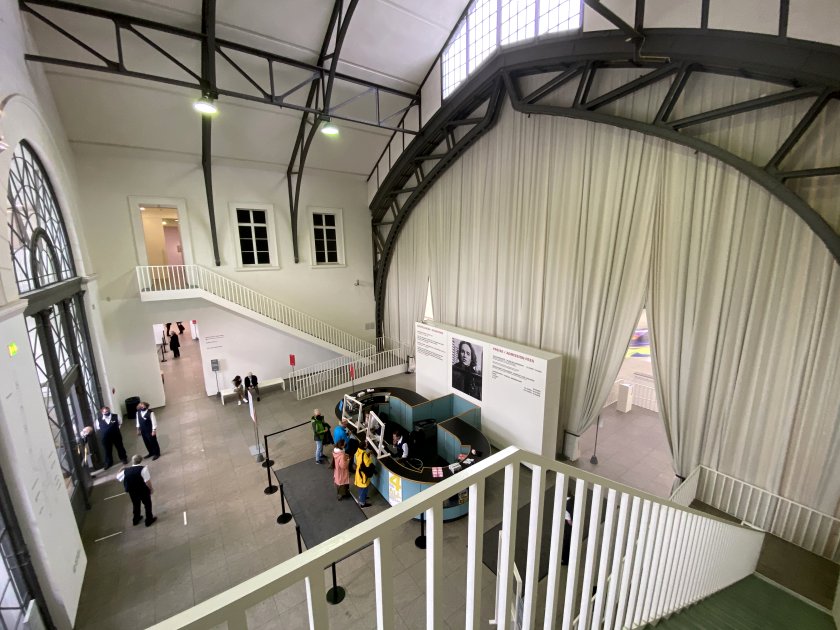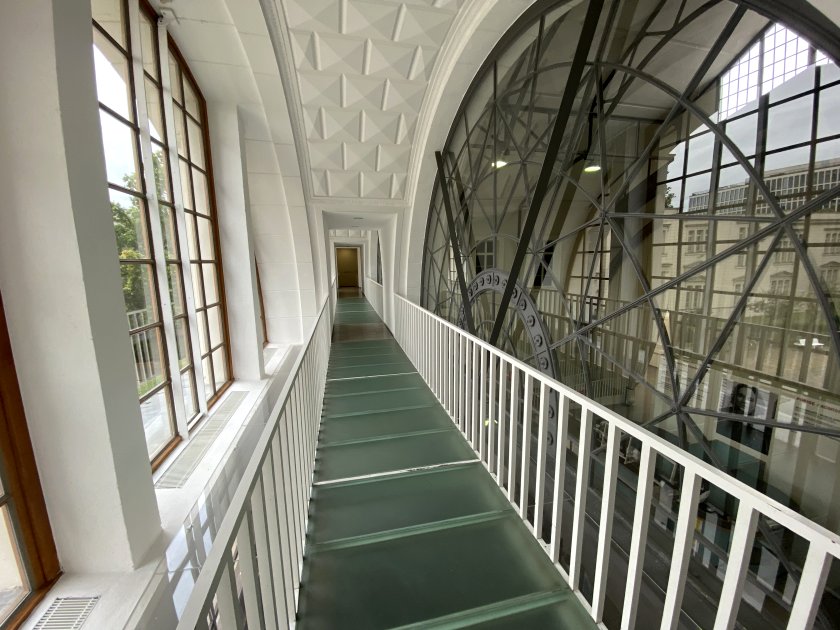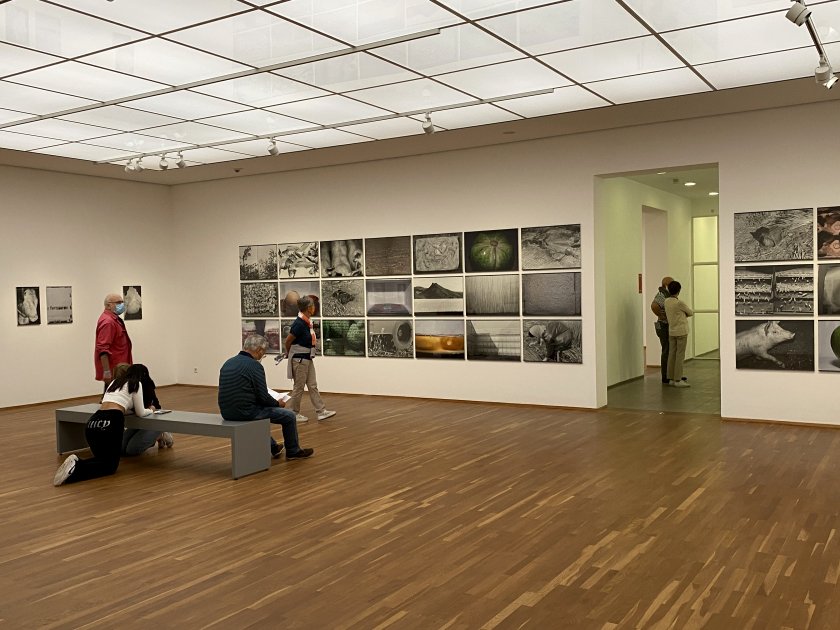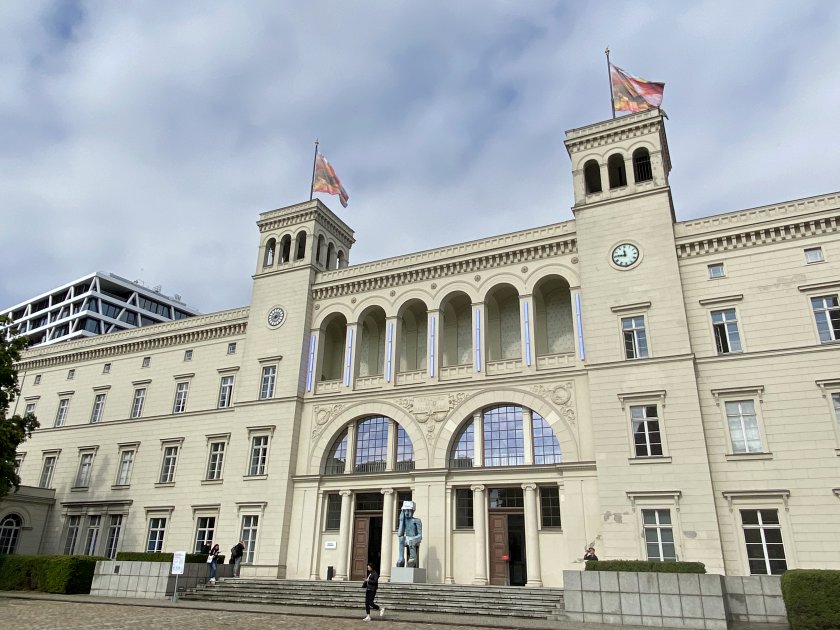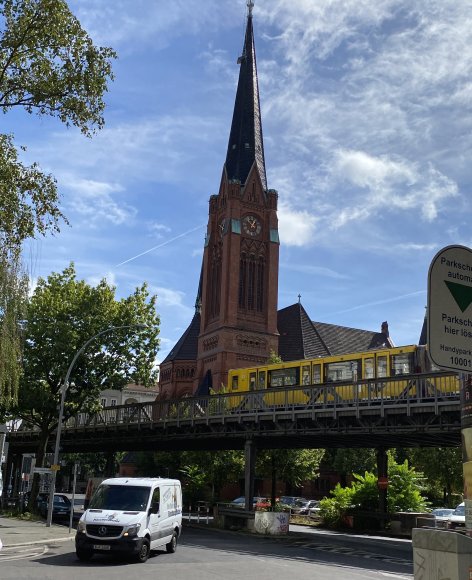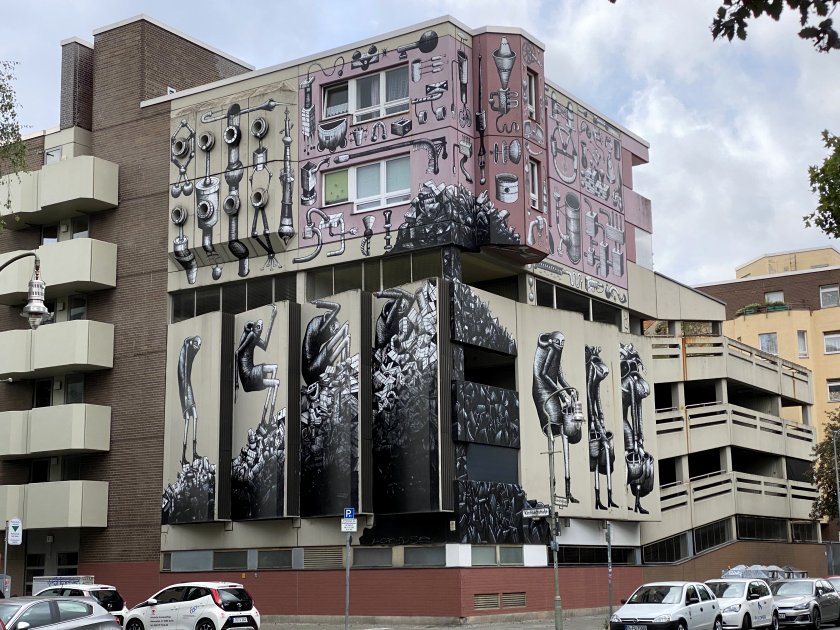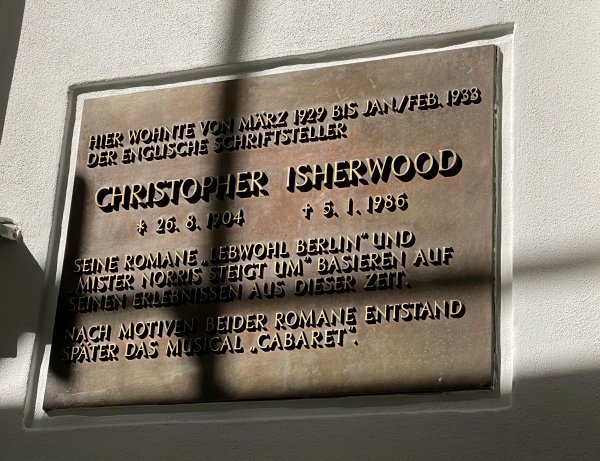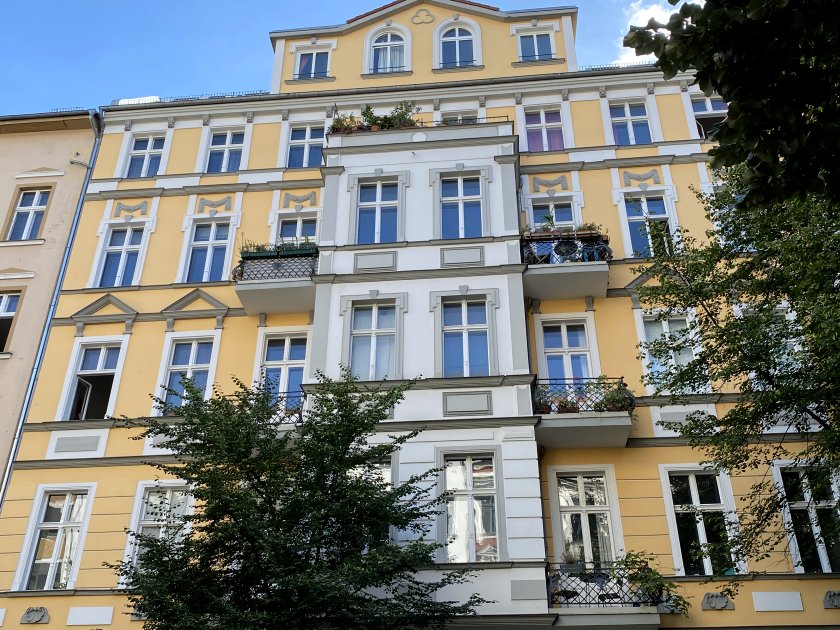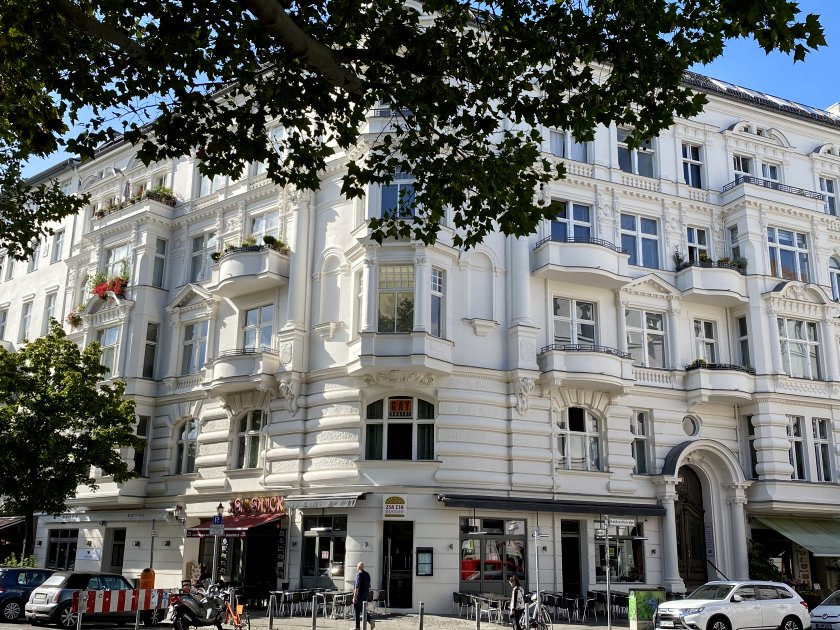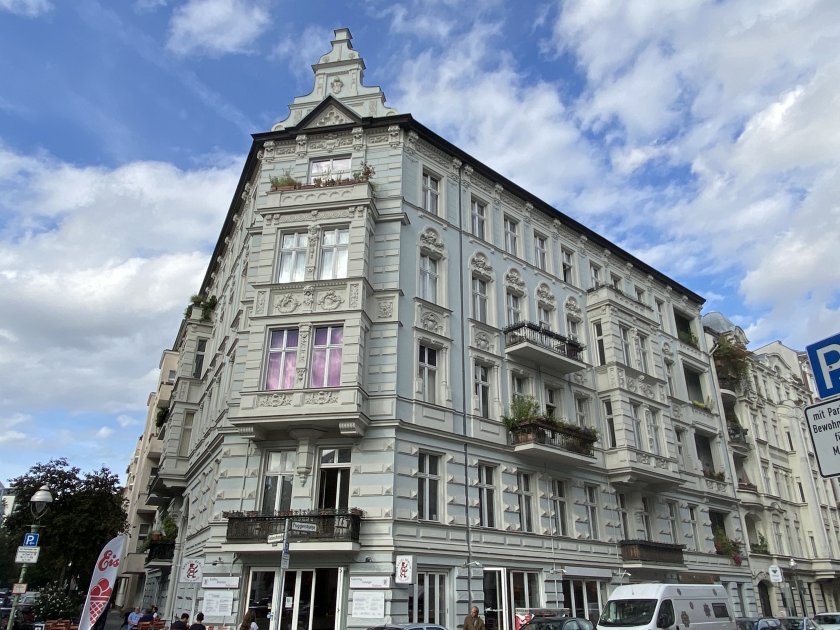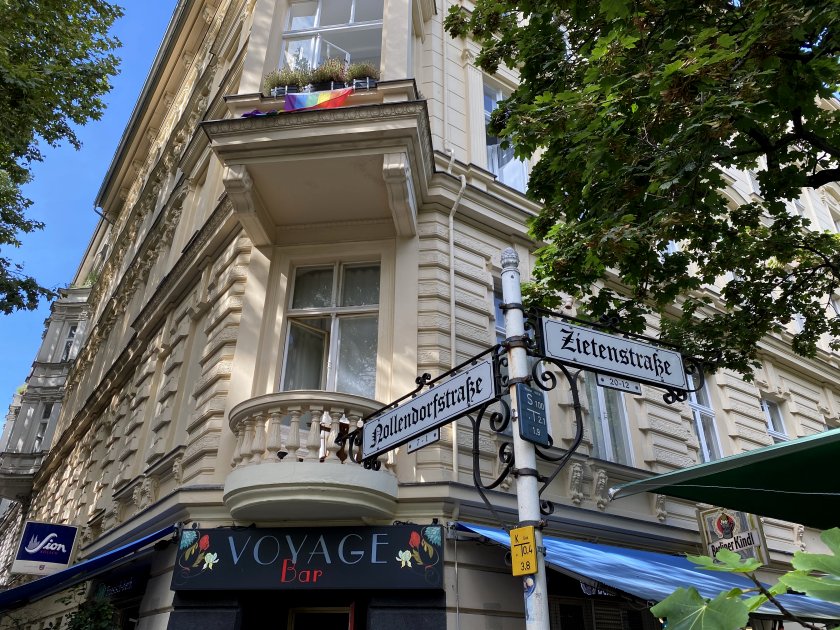Tempelhof Airport
Tempelhof was Berlin’s first major airport, operating between 1923 (making it a similar vintage to Croydon Airport) and 2008. The former airport’s main claim to fame is the role it played in the Berlin Airlift of 1948-49, which aimed to defeat the former Soviet Union’s attempt to strangle West Berlin by placing a land blockade around it. Nowadays, the part of the airfield furthest from the terminal has become a public park, while the terminal itself – having finished a spell as a refugee centre – was undergoing work to prevent it falling into disrepair. Part of the closure agreement was that it will never again be used as an operational airport.
We took a fairly comprehensive tour lasting nearly two hours.
Two very different stations
On one rainy morning, we decided to visit Berlin’s former Hamburg Station (Hamburger Bahnhof), now repurposed as an impressive Museum of Contemporary Art. In order to get there without being soaked, we took an S-Bahn train to the city’s relatively new Hauptbahnhof, with its amazing array of multi-level tracks.
Schöneberg
Northern Schöneberg, and in particular the area around Nollendorfplatz, has for many years been Berlin’s gay village. Bruce and I booked ourselves on an unusual walking tour that focused on the area’s colourful past in the inter-war years of the 20th century, prior to the Nazis coming to power. Our guide Tobias did a great job bringing the subject to life, and it was all the more meaningful for me coming within 7 months of seeing the musical Cabaret for the first time. Indeed, a particular highlight of the tour was seeing the commemoration plaque for former resident and Anglo-American author Christopher Isherwood, whose 1939 novel Goodbye to Berlin helped to inspire the musical.

